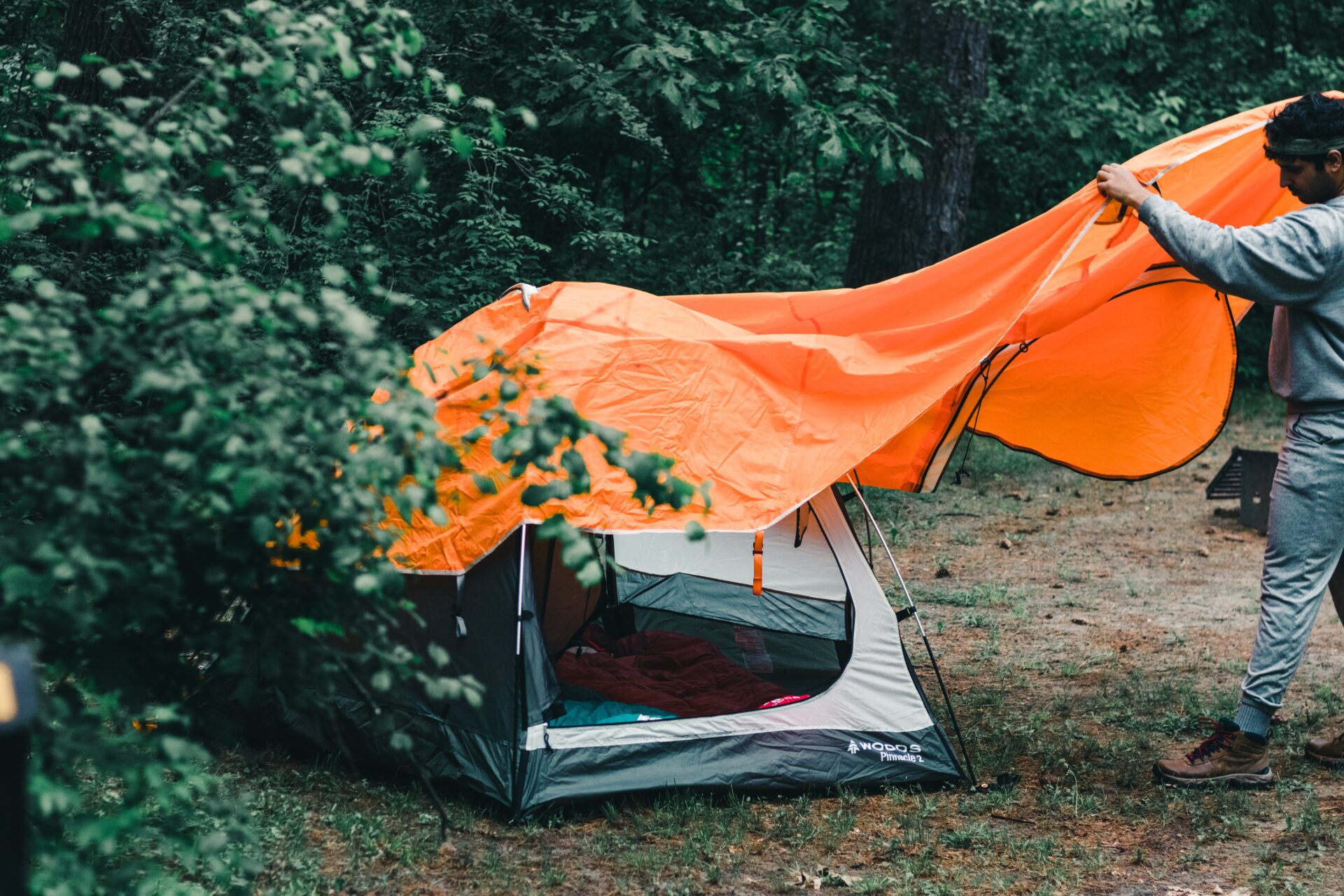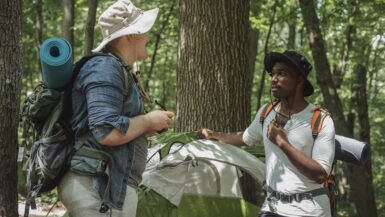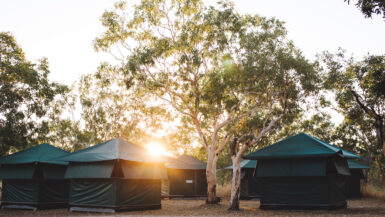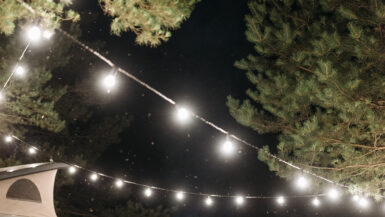Iceland is a country that is renowned for its stunning natural beauty, with its rugged landscapes, towering waterfalls, and vast glaciers. It is also a country that takes its commitment to the environment seriously, with a focus on sustainable tourism and a desire to preserve its unique natural resources. For those who want to experience the beauty of Iceland while minimizing their impact on the environment, camping is an excellent option. In this article, we will highlight some of the best eco-friendly camping sites in Iceland, where visitors can enjoy the great outdoors while minimizing their carbon footprint. From remote wilderness campsites to family-friendly locations close to major attractions, there is an eco-friendly camping option for everyone in Iceland.
Introduction to Eco-Friendly Camping in Iceland
Iceland is a country known for its breathtaking natural beauty, with glaciers, waterfalls, and volcanoes that attract millions of tourists every year. However, with the increase in tourism, the environmental impact has become a major concern. Sustainable tourism is the need of the hour, and camping is one of the best ways to enjoy Iceland’s natural beauty while minimizing your carbon footprint.
Eco-friendly camping in Iceland is all about enjoying the great outdoors while keeping the environment in mind. It involves using sustainable practices such as leaving no trace, reducing waste, and respecting the local culture and wildlife. In this article, we will explore the best eco-friendly camping sites in Iceland that offer a unique and sustainable camping experience.
Whether you are a seasoned camper or a first-timer, this guide will provide you with all the information you need to plan an eco-friendly camping trip in Iceland. From the best time to visit to tips on reducing your environmental impact, we have got you covered. So, pack your bags, grab your tent, and get ready to explore Iceland’s natural wonders in an eco-friendly way.
The Importance of Sustainable Tourism in Iceland
Iceland is a small country with a fragile ecosystem that is easily impacted by tourism. Over the years, the number of tourists visiting Iceland has increased significantly, leading to an increase in environmental degradation. Sustainable tourism is crucial for Iceland’s tourism industry to thrive while preserving the country’s natural beauty.
Sustainable tourism is a way of traveling that takes into account the impact on the environment, economy, and local communities. It is all about minimizing the negative impact of tourism while maximizing the benefits. In Iceland, sustainable tourism is not just a buzzword, but a way of life.
By choosing to camp at eco-friendly camping sites in Iceland, you are not only reducing your carbon footprint but also supporting local businesses that promote sustainable tourism. These camping sites are designed to minimize their impact on the environment by using renewable energy sources, recycling, and reducing waste.
In addition to supporting sustainable tourism, camping in Iceland also allows you to experience the country’s natural beauty in a unique way. You can explore remote areas, witness the Northern Lights, and enjoy the peacefulness of nature.
In conclusion, sustainable tourism is crucial for Iceland’s future, and eco-friendly camping is a great way to support this cause. By choosing to camp at eco-friendly camping sites, you can reduce your environmental impact while enjoying Iceland’s natural beauty.
Top Eco-Friendly Camping Sites in Iceland
Iceland offers a wide range of camping sites, but not all of them are eco-friendly. To help you plan your eco-friendly camping trip, we have compiled a list of the top eco-friendly camping sites in Iceland.
1. Thakgil Campsite
Thakgil Campsite is located in the south of Iceland and is surrounded by stunning mountains, glaciers, and waterfalls. This eco-friendly camping site uses renewable energy sources and has a waste management system that includes recycling and composting. The site has a kitchen, shower facilities, and a BBQ area. Thakgil Campsite is also a great base for hiking and exploring the nearby glaciers.
2. Hamragarðar Campsite
Hamragarðar Campsite is located in the north of Iceland and is surrounded by beautiful landscapes and mountains. This eco-friendly camping site uses renewable energy sources and has a waste management system that includes recycling and composting. The site has a kitchen, shower facilities, and a playground for children. Hamragarðar Campsite is also a great base for exploring the nearby Lake Mývatn and the Jökulsárgljúfur National Park.
3. Kirkjubæjarklaustur Campsite
Kirkjubæjarklaustur Campsite is located in the south of Iceland and is surrounded by stunning nature, including glaciers, waterfalls, and black sand beaches. This eco-friendly camping site uses renewable energy sources and has a waste management system that includes recycling and composting. The site has a kitchen, shower facilities, and a playground for children. Kirkjubæjarklaustur Campsite is also a great base for exploring the nearby Skaftafell National Park and the Vatnajökull Glacier.
4. Þjóðvegur Campsite
Þjóðvegur Campsite is located in the west of Iceland and is surrounded by beautiful landscapes and mountains. This eco-friendly camping site uses renewable energy sources and has a waste management system that includes recycling and composting. The site has a kitchen, shower facilities, and a playground for children. Þjóðvegur Campsite is also a great base for exploring the nearby Snæfellsjökull National Park and the Snæfellsnes Peninsula.
In conclusion, camping at eco-friendly camping sites in Iceland is a great way to experience the country’s natural beauty while minimizing your environmental impact. The above-mentioned camping sites are some of the best eco-friendly options available in Iceland, offering a unique and sustainable camping experience.
Detailed Description of Each Camping Site
To help you choose the perfect eco-friendly camping site in Iceland, we have provided a detailed description of each site.
1. Thakgil Campsite
Thakgil Campsite is located in the south of Iceland and is surrounded by stunning mountains, glaciers, and waterfalls. The site has 42 pitches for tents and campervans, and it offers basic facilities such as a kitchen, shower facilities, and a BBQ area. Thakgil Campsite uses renewable energy sources and has a waste management system that includes recycling and composting.
Activities and Attractions near Thakgil Campsite:
– Hiking to the nearby glaciers and waterfalls
– Exploring the nearby Skaftafell National Park
– Witnessing the Northern Lights during the winter season
2. Hamragarðar Campsite
Hamragarðar Campsite is located in the north of Iceland and is surrounded by beautiful landscapes and mountains. The site has 50 pitches for tents and campervans, and it offers basic facilities such as a kitchen, shower facilities, and a playground for children. Hamragarðar Campsite uses renewable energy sources and has a waste management system that includes recycling and composting.
Activities and Attractions near Hamragarðar Campsite:
– Exploring the nearby Lake Mývatn and the Jökulsárgljúfur National Park
– Visiting the nearby Geothermal Baths
– Hiking to the nearby waterfalls
3. Kirkjubæjarklaustur Campsite
Kirkjubæjarklaustur Campsite is located in the south of Iceland and is surrounded by stunning nature, including glaciers, waterfalls, and black sand beaches. The site has 80 pitches for tents and campervans, and it offers basic facilities such as a kitchen, shower facilities, and a playground for children. Kirkjubæjarklaustur Campsite uses renewable energy sources and has a waste management system that includes recycling and composting.
Activities and Attractions near Kirkjubæjarklaustur Campsite:
– Exploring the nearby Skaftafell National Park and the Vatnajökull Glacier
– Visiting the nearby Fjaðrárgljúfur Canyon
– Hiking to the nearby waterfalls
4. Þjóðvegur Campsite
Þjóðvegur Campsite is located in the west of Iceland and is surrounded by beautiful landscapes and mountains. The site has 50 pitches for tents and campervans, and it offers basic facilities such as a kitchen, shower facilities, and a playground for children. Þjóðvegur Campsite uses renewable energy sources and has a waste management system that includes recycling and composting.
Activities and Attractions near Þjóðvegur Campsite:
– Exploring the nearby Snæfellsjökull National Park and the Snæfellsnes Peninsula
– Visiting the nearby Rauðfeldsgjá Gorge
– Hiking to the nearby mountains and waterfalls
In conclusion, each eco-friendly camping site in Iceland offers a unique and sustainable camping experience. By choosing the right camping site, you can enjoy Iceland’s natural beauty while minimizing your environmental impact. All of the above-mentioned camping sites offer basic facilities, but their location and surroundings make them a great choice for eco-friendly camping in Iceland.
Activities and Attractions near the Camping Sites
One of the best things about camping in Iceland is the opportunity to explore the country’s natural beauty. Here are some of the activities and attractions near the eco-friendly camping sites in Iceland.
1. Thakgil Campsite
– Hiking to the nearby glaciers and waterfalls
– Exploring the nearby Skaftafell National Park
– Witnessing the Northern Lights during the winter season
2. Hamragarðar Campsite
– Exploring the nearby Lake Mývatn and the Jökulsárgljúfur National Park
– Visiting the nearby Geothermal Baths
– Hiking to the nearby waterfalls
3. Kirkjubæjarklaustur Campsite
– Exploring the nearby Skaftafell National Park and the Vatnajökull Glacier
– Visiting the nearby Fjaðrárgljúfur Canyon
– Hiking to the nearby waterfalls
4. Þjóðvegur Campsite
– Exploring the nearby Snæfellsjökull National Park and the Snæfellsnes Peninsula
– Visiting the nearby Rauðfeldsgjá Gorge
– Hiking to the nearby mountains and waterfalls
In addition to the above-mentioned activities, all of the camping sites are located in areas known for their scenic drives, wildlife viewing, and opportunities for outdoor recreation such as hiking, cycling, and kayaking.
It is important to note that Iceland’s weather can be unpredictable, so it is always a good idea to check the forecast before planning any outdoor activities. It is also important to respect the local culture and wildlife while exploring Iceland’s natural beauty.
In conclusion, eco-friendly camping in Iceland offers a unique opportunity to explore the country’s natural beauty while minimizing your environmental impact. With a variety of activities and attractions near the camping sites, you can create a memorable and sustainable camping experience.
Tips for Eco-Friendly Camping in Iceland
Camping in Iceland is a great way to enjoy the country’s natural beauty while minimizing your environmental impact. Here are some tips for eco-friendly camping in Iceland:
1. Use Eco-Friendly Camping Gear
Choose eco-friendly camping gear such as biodegradable soap, reusable water bottles, and solar-powered chargers. Consider renting gear instead of buying new gear to reduce waste.
2. Leave No Trace
Pack out all of your trash and leave the campsite as you found it. Avoid using single-use plastics and dispose of waste properly in designated bins.
3. Respect the Local Culture and Wildlife
Respect the local culture and wildlife by following the rules and regulations of the camping site. Keep a safe distance from wildlife and do not disturb their natural habitats.
4. Conserve Water and Energy
Conserve water and energy by taking shorter showers and turning off lights and electronics when not in use. Use renewable energy sources such as solar power.
5. Plan Ahead
Plan ahead by researching the area and weather conditions before your trip. Make sure to bring appropriate clothing and gear for the weather conditions.
6. Use Public Transportation
Consider using public transportation or carpooling to reduce your carbon footprint. If you are renting a car, choose a fuel-efficient option.
In conclusion, eco-friendly camping in Iceland is a great way to enjoy the country’s natural beauty while minimizing your environmental impact. By following these tips, you can have a memorable and sustainable camping experience in Iceland.
How to Reduce Your Environmental Impact While Camping in Iceland
Camping in Iceland is an unforgettable experience, but it’s important to remember that we have a responsibility to protect the environment while enjoying it. Here are some tips on how to reduce your environmental impact while camping in Iceland:
1. Use Eco-Friendly Camping Gear
Invest in eco-friendly camping gear such as a solar-powered charger, reusable water bottles, and biodegradable toiletries. Avoid disposable items like paper plates and plastic cutlery, and instead, bring reusable utensils and dishes.
2. Respect the Environment
When camping in Iceland, it’s important to respect the environment and leave no trace behind. Follow the “leave no trace” principles, which include packing out all trash, not disturbing natural habitats, and avoiding making fires.
3. Stay on Designated Campsites
To minimize your impact, it’s best to stay on designated campsites. These campsites have facilities that are designed to handle waste and reduce environmental impact. Avoid camping in areas that are not designated campsites, as this can damage the fragile environment.
4. Use Public Transportation
If possible, use public transportation to get to your camping destination. This reduces your carbon footprint and helps to preserve Iceland’s beautiful natural landscapes.
5. Conserve Water and Energy
Water and energy are precious resources in Iceland, so it’s important to conserve them. Take short showers, turn off lights when not in use, and avoid wasting water.
By following these tips, you can help preserve Iceland’s beautiful natural environment while still enjoying everything this amazing country has to offer.
Best Time to Visit Eco-Friendly Camping Sites in Iceland
Iceland is a beautiful country to visit all year round, but the best time to visit eco-friendly camping sites in Iceland is during the summer months, from June to August. During this time, the weather is milder, and the days are longer, giving you more time to explore the beautiful outdoors.
June
June is a great month to visit Iceland, as the weather is mild, and the days are long. The landscape is lush and green, with wildflowers blooming everywhere. This is a great time to explore Iceland’s national parks, go hiking or fishing, and soak in natural hot springs.
July
July is the warmest month in Iceland, with long days and mild weather. This is a great time to explore Iceland’s glaciers, go whale watching, or take a dip in one of Iceland’s many hot springs. July is also the month of the Midnight Sun, where the sun never sets, giving you more time to explore.
August
August is the end of the summer season in Iceland, with mild weather and long days. This is a great time to visit Iceland’s waterfalls, go camping, or take a road trip around the country. August is also a great time to see the Northern Lights, as the nights start to get longer.
While summer is the best time to visit eco-friendly camping sites in Iceland, it’s important to note that this is also the busiest time of year for tourism. If you prefer a quieter experience, consider visiting during the shoulder seasons of May or September when the weather is still mild, and the crowds are smaller.
In conclusion, Iceland is a beautiful country to visit all year round, but the summer months of June to August are the best time to visit eco-friendly camping sites in Iceland. Whether you’re interested in hiking, fishing, or soaking in natural hot springs, Iceland has something to offer for everyone.
Conclusion and Final Thoughts on Eco-Friendly Camping in Iceland
Iceland is a country of incredible natural beauty, and eco-friendly camping is a great way to experience it. By following sustainable practices, we can ensure that these natural wonders will be preserved for generations to come.
From the stunning landscapes of Skaftafell National Park to the geothermal wonders of Reykjadalur Valley, Iceland has no shortage of amazing eco-friendly camping sites. Each site offers a unique experience, from hiking and fishing to soaking in hot springs and observing wildlife.
When planning a trip to Iceland, it’s important to keep in mind the best time to visit, the importance of sustainable tourism, and tips for reducing your environmental impact while camping. By doing so, you can help preserve Iceland’s natural beauty for future generations to enjoy.
In conclusion, eco-friendly camping in Iceland is an unforgettable experience that should be on every nature lover’s bucket list. With so many amazing camping sites to choose from, there’s something for everyone in this stunning country. So pack your bags, grab your camping gear, and get ready for an adventure of a lifetime in Iceland!





Leave a reply